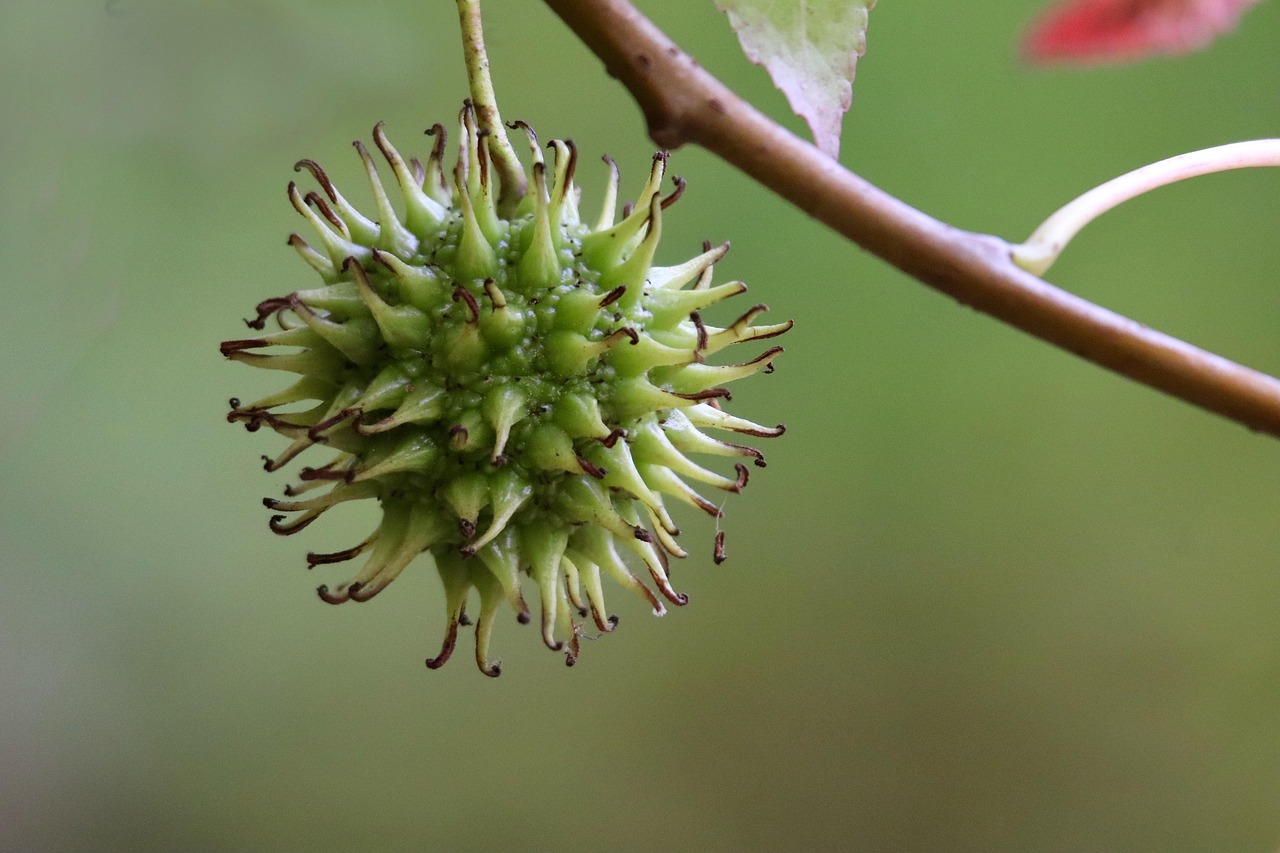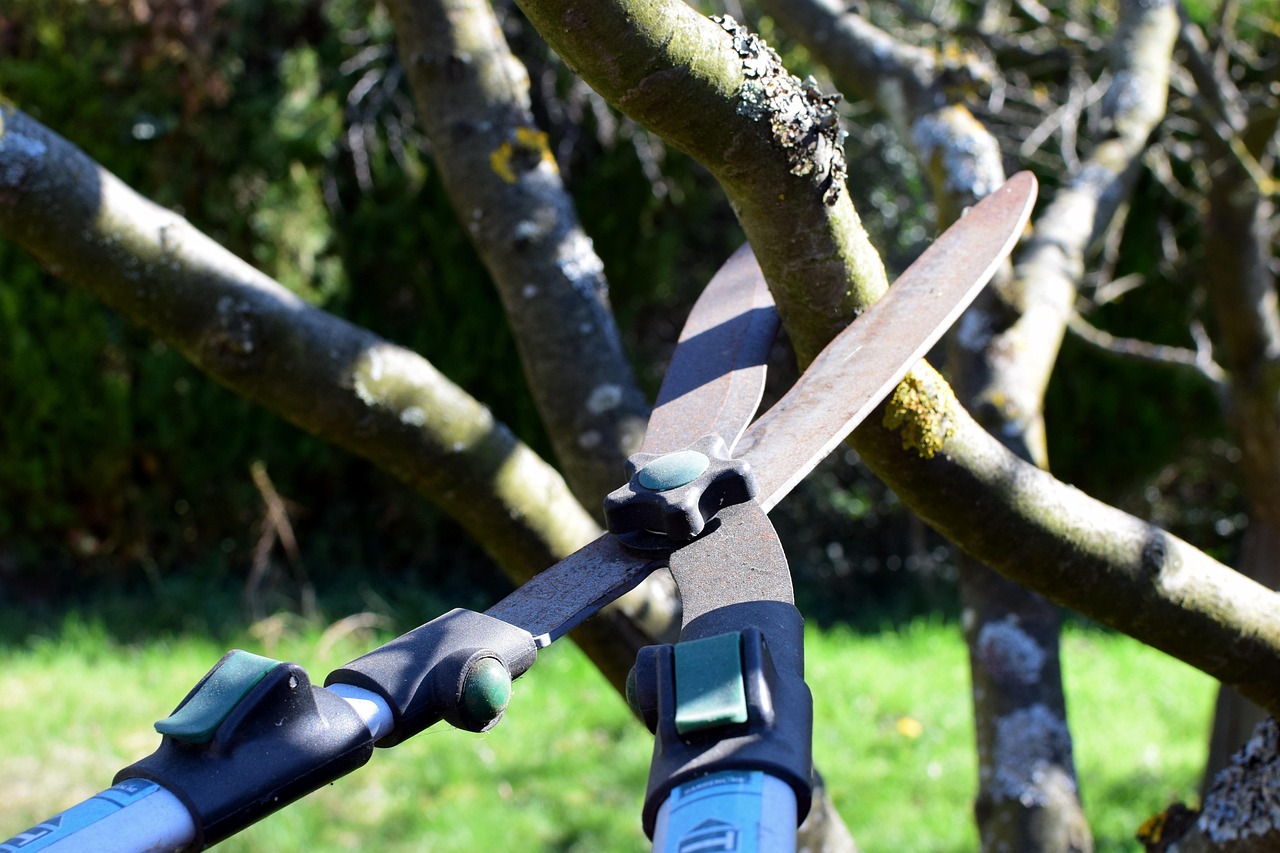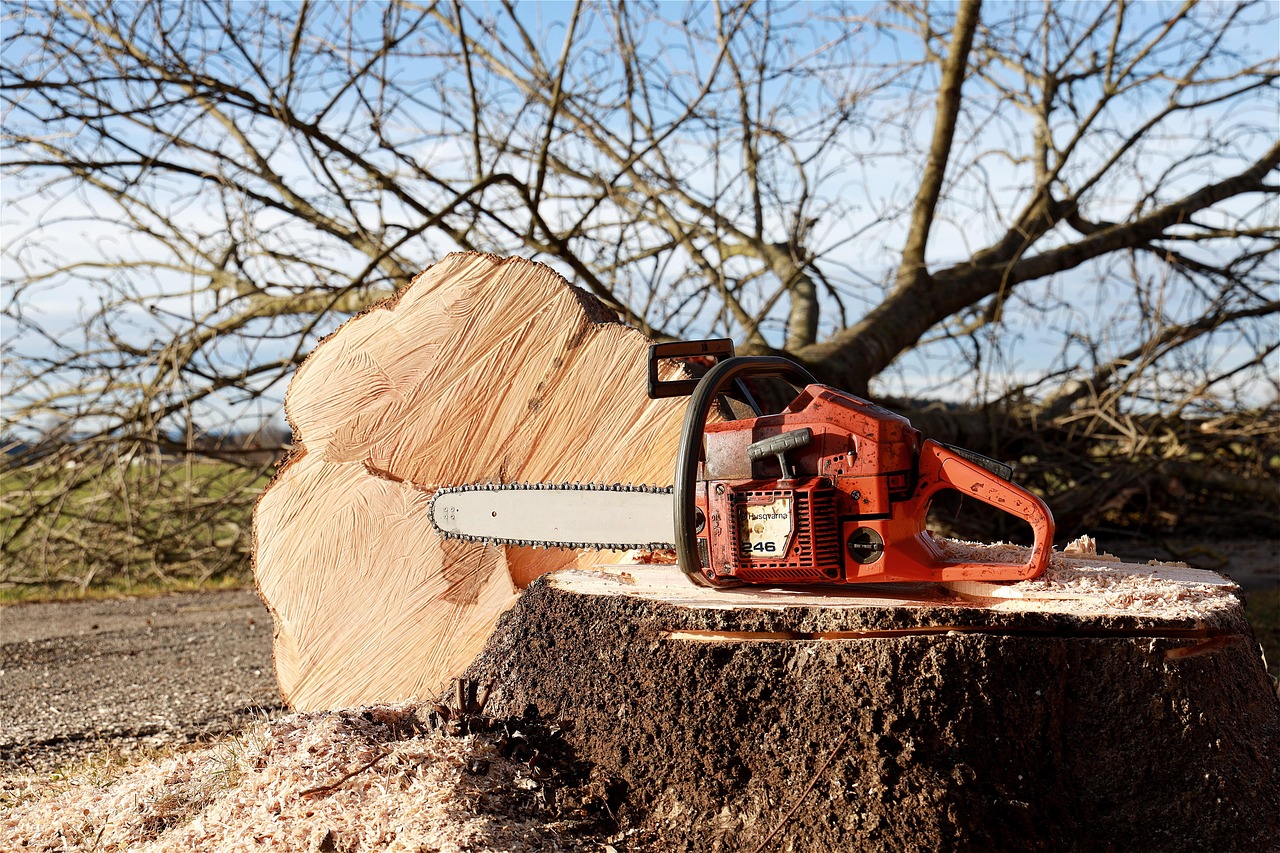Fruit tree pruning is essential for achieving higher organic certification standards. Proper pruning enhances tree health, improves fruit quality, and increases yield while minimizing disease risks. Adhering to organic practices during pruning is crucial for maintaining certification.
Understanding Organic Certification Standards
Organic certification is a rigorous process that ensures agricultural products meet specific environmental and health standards. Farmers must adhere to guidelines set by organizations such as the United States Department of Agriculture (USDA). These standards focus on sustainability, biodiversity, and the use of natural processes in farming.

To qualify for organic certification, growers must demonstrate compliance with practices that promote soil health, reduce chemical inputs, and enhance ecosystem balance. This includes careful management of fruit trees, which are a significant component of many organic farms.
The Importance of Pruning in Organic Farming
Pruning fruit trees serves multiple purposes in organic farming. It not only shapes the tree for better light penetration but also encourages healthy growth and fruit production. Key benefits of pruning include:
- Improved air circulation, which reduces the risk of fungal diseases.
- Enhanced sunlight exposure, leading to better fruit quality.
- Increased fruit yield by promoting new growth.
- Maintenance of tree structure and form for easier harvest.
Recommended Pruning Techniques
Pruning techniques vary based on the type of fruit tree and its growth stage. However, there are several general practices that can help meet organic certification standards:

1. Timing of Pruning
The timing of pruning is critical. Most fruit trees are best pruned during their dormant season, typically late winter or early spring before buds break. This timing minimizes stress on the tree and encourages vigorous new growth in the growing season.
2. Tools and Techniques
Using the right tools is vital for effective pruning. Clean and sharp tools minimize damage to branches and reduce the risk of disease transmission. Recommended tools include:
- Bypass pruners for small branches.
- Loppers for medium-sized branches.
- Saws for larger limbs.
3. Pruning Methods
Several methods can be employed when pruning fruit trees:

- Thinning: Removing entire branches to improve air circulation and light penetration.
- Heading back: Cutting branches to a bud to encourage new growth.
- Renewal pruning: Removing older branches to promote younger growth.
Common Mistakes to Avoid
While pruning is beneficial, it is easy to make mistakes that can harm the tree’s health and productivity. Some common errors include:
- Over-pruning, which can stress the tree.
- Pruning at the wrong time, leading to reduced fruiting.
- Neglecting sanitation practices, which can spread diseases.
The Role of Organic Practices in Pruning
Adhering to organic practices during pruning ensures compliance with certification standards. This includes:
- Avoiding synthetic chemicals for pest and disease management.
- Utilizing organic mulch to suppress weeds and maintain soil moisture.
- Implementing companion planting strategies to enhance biodiversity.
Benefits of Meeting Higher Standards
Meeting higher organic certification standards through effective pruning can provide numerous advantages:

- Access to premium markets that demand high-quality organic products.
- Enhanced soil health due to improved tree vigor.
- Reduced reliance on external inputs, leading to cost savings.
- Increased consumer trust in organic products due to transparency in farming practices.
Conclusion on Pruning’s Impact on Organic Certification
The act of pruning is more than just a maintenance task; it is a crucial aspect of organic farming that directly influences certification outcomes. By following proper techniques and adhering to organic principles, farmers can ensure their fruit trees thrive while meeting the stringent requirements of organic certification.
Advanced Pruning Techniques for Organic Fruit Trees
To achieve optimal results in organic fruit production, it is crucial to adopt advanced pruning techniques tailored to specific fruit tree varieties. These methods not only enhance tree health but also improve fruit quality and yield. Understanding how to execute these techniques effectively can lead to better compliance with organic certification standards.
The Espalier Technique
Espalier is an ancient pruning method that involves training trees to grow flat against a wall or trellis. This technique maximizes sunlight exposure and limits space, making it ideal for small gardens. Key benefits include:
- Increased air circulation around the fruit.
- Facilitated harvesting due to accessible fruit placement.
- Enhanced aesthetics of the garden or orchard.
To create an espaliered fruit tree, follow these steps:
- Select a suitable tree variety, such as apple or pear.
- Choose a sunny location with a wall or trellis for support.
- Prune the tree annually to maintain its shape and encourage lateral growth.
Crown Thinning
Crown thinning is a selective pruning technique that removes specific branches to allow light to penetrate deeper into the tree canopy. This practice is particularly beneficial for older trees that may have dense foliage. Advantages of crown thinning include:
- Improved fruit quality due to better light exposure.
- Reduced competition for nutrients among branches.
- Lower risk of pest infestations and diseases.
When performing crown thinning, it is important to:
- Assess the tree’s structure and identify crowded areas.
- Remove branches that cross or rub against each other.
- Avoid removing more than 25% of the crown in a single season.
Pest and Disease Management During Pruning
Effective pest and disease management is essential for maintaining organic standards while pruning fruit trees. Organic growers must be proactive in identifying potential threats and employing natural solutions. Some key strategies include:
Sanitation Practices
To prevent the spread of diseases during pruning, proper sanitation practices should be followed:
- Clean pruning tools before and after each use with a solution of 10% bleach or alcohol.
- Dispose of pruned branches away from the orchard to minimize disease spread.
- Avoid pruning during wet weather when pathogens are more active.
Naturally Managing Pests
Integrated Pest Management (IPM) techniques can help manage pests without synthetic chemicals. Consider these organic methods:
- Introduce beneficial insects such as ladybugs and lacewings that prey on harmful pests.
- Use insecticidal soaps or neem oil as a natural pesticide when infestations occur.
- Encourage biodiversity by planting companion plants that attract beneficial insects.
The Role of Soil Health in Pruning Success
The health of the soil plays a vital role in the overall success of fruit trees. Healthy soil promotes robust growth, enabling trees to recover from pruning more effectively. Here are some practices to enhance soil health:
Soil Testing
Conduct regular soil tests to assess nutrient levels and pH balance. This information allows for targeted amendments to improve soil quality. Essential nutrients for fruit trees include:
- Nitrogen for vigorous growth.
- Phosphorus for root development and flowering.
- Potassium for overall tree health and disease resistance.
Organic Amendments
Incorporating organic amendments can significantly enhance soil fertility. Consider these options:
- Compost: Improves soil structure and provides essential nutrients.
- Bone meal: A great source of phosphorus for root growth.
- Kelp meal: Supplies trace minerals that promote overall tree health.
Timing and Seasonal Considerations for Pruning
The timing of pruning can greatly influence the effectiveness of the process. Different types of fruit trees may require specific timing considerations. Here are some general guidelines:
Dormant Season Pruning
Most fruit trees benefit from dormant season pruning, which typically occurs in late winter or early spring. This timing helps minimize stress on the tree and encourages healthy new growth. However, some trees, such as cherry and apricot, should be pruned later to avoid susceptibility to diseases like silver leaf.
Summer Pruning
Summer pruning can also be beneficial, particularly for controlling growth and improving light penetration. This practice may involve:
- Removing water sprouts and suckers that drain energy from the tree.
- Thinning out young branches that have become overcrowded.
- Encouraging lateral growth by shortening long shoots.
Monitoring Tree Health Post-Pruning
After pruning, it is essential to monitor the health of the trees closely. Look for signs of stress or disease and take action when necessary. Regular inspections can help identify issues before they escalate, ensuring the trees remain healthy and productive.
Integrating Organic Practices in Pruning
Incorporating organic practices into the pruning process is essential for maintaining the integrity of organic fruit production. These practices not only align with certification requirements but also promote the overall health of the orchard ecosystem. This section discusses various organic approaches that can enhance pruning outcomes.
Utilizing Organic Fertilizers
Applying organic fertilizers before and after pruning can significantly improve tree health and growth. Organic fertilizers release nutrients slowly, providing a steady supply over time. Some recommended organic fertilizers include:
- Compost: A rich source of nutrients that improves soil structure.
- Fish emulsion: Provides a quick nutrient boost, particularly nitrogen.
- Bone meal: Excellent for promoting root development and flowering.
When applying organic fertilizers, it is essential to follow the manufacturer’s instructions and avoid over-fertilization, which can lead to excessive growth that may require more aggressive pruning.
Composting Pruned Material
Instead of discarding pruned branches and leaves, consider composting them. Composting is an effective way to recycle nutrients back into the soil. Here are steps to successfully compost pruned materials:
- Chop pruned branches into smaller pieces to speed up decomposition.
- Mix with other organic materials such as kitchen scraps and yard waste.
- Maintain moisture levels and aerate the pile regularly to encourage microbial activity.
After a few months, the compost will be ready to enrich the soil around your fruit trees, contributing to their health and productivity.
Understanding Tree Growth Patterns
To effectively prune fruit trees, it is crucial to understand their growth patterns. Different species exhibit unique growth habits, and recognizing these can inform pruning techniques and timing. Here are some common growth patterns:
Upright vs. Spreading Trees
Upright trees, such as many apple varieties, tend to grow vertically with less lateral branching. In contrast, spreading trees like peaches have a wider canopy. Each type requires different pruning approaches:
- Upright trees: Focus on thinning to encourage lateral growth and manage height.
- Spreading trees: Emphasize heading cuts to control width and promote open centers to improve light penetration.
Growth Stages of Fruit Trees
Understanding the growth stages of fruit trees can also influence pruning decisions. The stages include:
- Juvenile Stage: Focus on shaping young trees by establishing strong scaffolding branches.
- Mature Stage: Regular maintenance pruning to manage size and improve fruit quality.
- Declining Stage: Renewal pruning to encourage new growth and restore vigor.
The Impact of Weather on Pruning Practices
Weather conditions play a significant role in determining when and how to prune fruit trees. Seasonal variations can affect tree health and growth patterns. Here are some weather-related factors to consider:
Temperature and Frost Risks
Early spring frosts can damage newly pruned trees if cuts are made too early. It is advisable to wait until the risk of frost has passed before undertaking major pruning activities. For late bloomers like peaches, late pruning can help delay flowering and mitigate frost damage.
Humidity and Rainfall
High humidity and rainfall can increase the risk of fungal diseases following pruning. To minimize this risk, consider these practices:
- Avoid pruning during wet weather conditions.
- Ensure proper air circulation in the canopy by removing dense foliage.
- Apply organic fungicides if necessary to protect fresh cuts from disease.
Training Techniques for Young Trees
In addition to traditional pruning methods, training young trees effectively can set the stage for healthy development. Training involves guiding the tree’s growth direction and shape through specific techniques:
Centrally Leader Training
This method encourages a single central leader while allowing lateral branches to develop. Follow these steps for effective centrally leader training:
- Select a strong central leader during the first year.
- Prune competing leaders to establish dominance.
- Encourage lateral branch development by making appropriate cuts above outward-facing buds.
Open Center Training
This technique promotes an open canopy by removing the central leader. It is commonly used for stone fruits such as cherries and peaches. Key steps include:
- Select three to four strong scaffold branches that will form the framework of the tree.
- Remove any vertical growth in the center of the tree.
- Regularly maintain the open shape through annual pruning.
The Benefits of Professional Pruning Services
While many growers choose to prune their own fruit trees, hiring professional pruning services can provide additional benefits. Professionals bring expertise that can enhance tree management efforts. Consider these advantages:
Expertise in Tree Health
Professional pruners have extensive knowledge about tree biology and health. They can identify potential problems early and recommend effective solutions tailored to specific tree types.
Time Savings for Growers
Pruning can be time-consuming, especially for larger orchards. Hiring professionals frees up time for growers to focus on other critical aspects of their operations, such as pest management or marketing their products.
Long-Term Cost Efficiency
Investing in professional pruning services can lead to long-term cost savings by improving tree health and productivity, ultimately resulting in higher yields and better-quality fruit.
Additional Resources for Organic Pruning
Educating oneself about organic pruning and tree management can greatly enhance the effectiveness of practices employed in an orchard. Numerous resources are available for growers seeking to deepen their understanding of organic techniques.
Online Courses and Webinars
Many agricultural universities and organizations offer online courses and webinars focused on organic fruit production. These resources often cover a range of topics, including:
- Advanced pruning techniques specific to various tree species.
- Soil health management practices.
- Pest and disease management in organic systems.
Participating in these educational opportunities can provide valuable insights and practical knowledge directly applicable to managing fruit trees.
Books and Publications
Numerous books are dedicated to organic fruit tree care, providing comprehensive guides on pruning, pest management, and soil health. Some notable titles include:
- The Pruning Book by Lee Reich: A thorough guide covering various pruning techniques for fruit trees.
- Growing Fruit: A Complete Guide to Growing Fruit in Your Garden by John F. Adams: Offers insights on organic practices.
- Organic Fruit Production: A Guide to Growing Organic Fruit by Tim W. O’Connell: Focuses on organic fruit farming principles.
Local Cooperative Extension Services
Cooperative extension services provide localized advice on agricultural practices tailored to specific regions. They often have experts available to offer guidance on:
- Local pests and diseases that may affect fruit trees.
- Specific soil conditions and amendments suitable for organic growth.
- Workshops and community events focused on organic farming techniques.
Community Engagement and Networking
Building connections with other organic growers can enhance knowledge sharing and foster community support. Consider the following options for engagement:
Joining Local Grower Associations
Many regions have associations for organic farmers that hold regular meetings, workshops, and field days. These gatherings provide opportunities for:
- Networking with fellow growers to share successful practices.
- Learning from experienced farmers about their pruning strategies.
- Accessing exclusive resources and events related to organic certification.
Social Media Groups and Forums
Online platforms like Facebook, Reddit, and agricultural forums can be excellent resources for connecting with other organic growers. Engaging in discussions can lead to:
- Exchanging tips on effective pruning methods.
- Sharing experiences with pest management in organic systems.
- Gaining insights into regional challenges and solutions.
The Future of Organic Fruit Farming
The demand for organic produce continues to rise as consumers become more health-conscious and environmentally aware. This trend highlights the importance of sustainable farming practices, such as effective fruit tree pruning. Here are some future considerations for organic fruit farming:
Emphasis on Sustainable Practices
As regulations around environmental sustainability tighten, organic growers will need to adopt more holistic approaches that consider:
- The integration of permaculture principles into orchard management.
- The use of cover crops to enhance soil health during the off-season.
- Water conservation techniques to optimize resource use.
Research and Innovation
The agricultural sector is witnessing advancements in research related to organic farming. Innovations in technology, such as precision agriculture tools, can help optimize pruning practices and overall orchard management. These developments may include:
- Drones for monitoring tree health and growth patterns.
- Apps that provide real-time data on soil conditions.
- Genetic research aimed at developing disease-resistant fruit tree varieties.
Conclusion
Pruning fruit trees is a fundamental practice that not only enhances tree health but also plays a critical role in meeting higher organic certification standards. By employing effective pruning techniques, utilizing organic practices, and actively engaging with the community, growers can ensure their orchards thrive sustainably. The commitment to maintaining rigorous standards in organic farming not only benefits individual producers but also contributes to the overall health of ecosystems and communities. As the demand for organic produce grows, continuing education and adaptation will be essential for success in this dynamic field.
